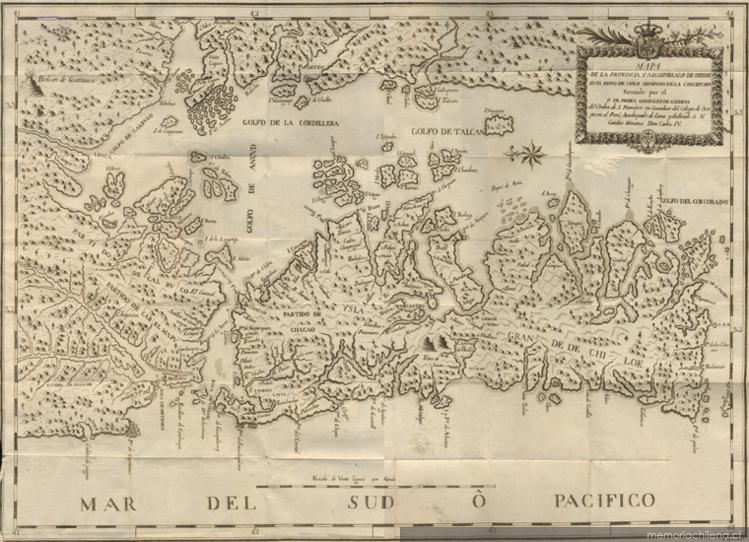The large island of Chiloé is located in the Southern Patagonia of the world, in the Los Lagos Region, Chile, between the 41º and 43º south latitude parallels. It includes a large island, the Big Island of Chiloé, and a large number of smaller islands and islets. The archipelago has an area of 9181 km² and had a total population of 167,659 people in 2012.
Chiloé es una transformación de Chilhué, la adaptación al español de chillwe, palabra que en mapudungun significa ‘lugar de chelles’. Los chelles (Chroicocephalus maculipennis), también llamados cáhuiles o gaviotines, son aves blancas de cabeza negra, muy frecuentes en las playas y lagunas del archipiélago.
Chiloé is a transformation of Chilhué, the Spanish adaptation of chillwe, a word that in Mapudungun means ‘place of chelles’. The chelles (Chroicocephalus maculipennis), also called cahuiles or terns, are black-headed white birds, very common on the beaches and lagoons of the archipelago.
The smaller islands are of wavy relief and in their greater part they are distributed in groups of three or four, but some are so close that they are united when lowering the tide. The islands of greater surface, after the Isla Grande “big island”, are Guafo, Quinchao, Lemuy, Butachauques and Tranqui. The most important groups are the Chauques Islands, the Chaulinec group, the Cahuach group, the Cailín group and the Desertores islands.
The climate of the archipelago is temperate rainy maritime, with average temperatures of about 11 ° C and slightly more than 2000 mm annual rainfall in its eastern part and 3000 mm on the western coast of the Big Island and more than 4000 mm in high sectors of the Piuchén mountain range. Snowfall is rare, but it rains throughout the year.
CRIA is located in Nercón, Castro (29,148 inhabitants). Port city and capital of the province of Chiloé since 1982. It is the third oldest city in Chile with continued existence, founded by Marshal Martin Ruiz de Gamboa in 1567. It highlights the palafitos, the market, and the San Francisco church, declared a National Monument and a World Heritage Site by Unesco.
TERRITORY
At the cultural level, the Chiloé archipelago presents features that differentiate it from the rest of the country: a prolific folkloric and cultural wealth derived from its isolation. The architecture has its own constructive and stylistic forms that have shaped the Chilota school of religious architecture in wood, the religious fervor maintains intact institutions such as prosecutors or sculptural exponents from the Chilota School of Imagery.
MYTHOLOGY
The archipelago of Chiloé forms a cultural universe with particular characteristics. The traditional isolation in which Chiloe society developed was an important factor in the preservation of religious and linguistic practices of the Spanish Middle Ages, at the same time that there was intense interbreeding and exchange between Iberian and indigenous cultural elements.
Witchcraft was deeply rooted in the island until well into the twentieth century. Sorcerers, around whom a system of popular beliefs has also been built, became as powerful and influential during the 19th century as the island’s own intendant. Grouped in a secret society called La Recta Provincia “The Straight Province“, popularly known as the “Majority”, they had a complex organization that was partially dismantled during the famous trial of the sorcerers of Chiloé in 1880.
The mythical Chilote universe is the result of innumerable crosses between the Spanish tradition and the Huilliche oral tradition. Among the chilote myths and legends, there is a belief in sorcerers and fantastic beings, such as:
- The Pincoya: It is an imaginary marine creature, it has the appearance of a young and very beautiful woman, with a long blonde hair. Unlike the chilote siren (which has a fish tail), she has a completely human appearance. The legend says that it appears from the depths of the sea, semi dressed in a sargasso costume to dance on the beaches and that, by means of the orientation of its dance, indicates whether fishing will be abundant or scarce in the upcoming season.
The Invunche: (from the mapudungun ifünche: “deformed person”) is a being from Mapuche mythology and Chilote mythology. In Chiloé it also receives the name of Machucho, Butamacho or Chivato. This creature is a deformed human being whose head is bent backwards and crushed; In addition, it has crooked arms, fingers, nose, mouth and ears and a tongue split in two. Goes on one leg or on three feet (one leg and hands), because the other leg is stuck behind the neck or the back of the neck. The invunche does not have the ability to speak, limited to emit guttural sounds, rough and unpleasant. - The Caleuche: The Caleuche is the Marino, the Art Ship, the Fire Ship, the Barcoiche, are all the names given to El Caleuche, that marvelous boat that carries music and light through the numerous Chilote channels, certain conditions such as days of haze, they make it possible to see or feel it, noises of chains, of celebration, music, and a magisterial figure of a school ship, they make it unmistakable. For some it is a disembodied vision and can cross to another boat, others indicate that they have been even in parties inside, although they prefer to make them on land, where there are women, for that they agree with merchants who have many daughters and El Caleuche. supplies goods as compensation, so the locals explain the rapid rise of some merchants who are not seen buying anything and thrive quickly, these protected El Caleuche usually have black hens and boats tarred with quilineja ropes.
The Caleuche can disappear and adopt the forms it wishes not to be seen and the sailors can transform into wolves or cahueles (dolphins). Another quality is the extraordinary speed it achieves. To observe it and not to be seen, you have to put a champa in your mouth, because the first thing they feel is the breath. There are also some trees behind which one can hide so as not to be carried by the Caleuche, among them the maqui and the tique. People have the fear of being taken by the Art Ship, so it never hurts to take precautions. - The Trauco: This little character, no more than 65 cms. of height, it is one of the best known of chilote mythology. He is a true faun, enemy of men and in love with girls, especially virgins. Of deformed aspect, it is very strong; with his small stone ax he can knock down trees with three blows. The Thrauco loves the beauty of the landscape and likes the “murtas”, small wild fruits. In spite of his ugliness, he is loved irresistibly by the maidens, attributing his pregnancies and justifying his “slips”.
- The Fiura: It is the female version of the Thrauco. Very small and extremely ugly, it captivates men, especially the young people it seduces. He lives near the swamps and bathes in the slopes where he then combs his long hair with a crystal comb. With the force of his breath he does the “bad” to the young people, who in this way justify some venereal disease.
- The Camahueto: It is a being the size of a yearling calf. Equipped with a single horn with miraculous properties, its development process lasts thirty years after which it moves to the sea, its definitive residence. He is responsible for the landslides of the floods.
- The Cuchivilo: zoomorphic sea monster, half snake and half pig (pig), inhabits muddy beaches of the island. He is considered guilty of mange that is acquired on the beaches where he has been seen.

